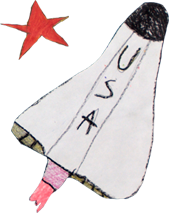Duke researcher propelled by the foundation's support
At age fourteen, Oren Becher moved with his family from his native Israel to South Bend, Indiana. He had taken some basic English courses before the big move, so after a couple of summer prep classes he gained the kind of fluency that transformed his internal dialogue, including dreams, into English. “It is amazing how the brain can make that much of an adjustment in a relatively short time,” says Becher. In the years that he adjusted to his new life in the U.S., Becher’s interest in the brain and how it works developed into a field of study and, eventually, his medical specialty.
Becher is now The Rory David Deutsch Scholar at The Preston Robert Tisch Brain Tumor Center at Duke University. His research, which is supported in great measure through The Foundation’s endowment fund with the university, builds on the momentum of work he conducted in one of his previous fellowships.
Darell D. Bigner, M.D., Ph.D., Director of the Brain Tumor Center at Duke, recognized that Becher’s research as a Pediatric Neuro-Oncology Fellow at Memorial Sloan-Kettering Cancer Center in New York involved the type of tumor Rory had. He mentioned the young researcher to Ross and Ellyn and thus led the recruitment effort that eventually brought Dr. Becher to Duke.
At Memorial Sloan-Kettering, in the lab of neurosurgeon Eric C. Holland, M.D., Ph.D., Becher was among a team working to develop models of tumors in mice in order to study and better understand the molecular mechanisms of tumors. Becher adapted the mouse modeling for brainstem gliomas and, in wanting to specialize in pediatric brainstem gliomas, considered starting his own lab. “But I was so impressed with Duke and its Brain Tumor Center,” he said. “I knew this was an incredible opportunity to continue my work.”
In his first year at Duke, Becher and five fellow researchers are using the genetic model to study the biology of the tumor and conduct drug screening to analyze its response to different treatments. “With the mouse model, we’re able to determine the impact of novel agents and prioritize further testing of cancer drugs,” says Becher. “One reason treatment fails is that not enough of a drug gets to the tumor because it can’t penetrate the blood brain barrier, which is the protective shell of the brain. Through the mouse model, we’re looking for ways to open the blood brain barrier.”
A related priority of Becher and his team is to study a tumor when it first presents itself, when its first genetic alteration takes place. “We’re actually trying to develop the tumor in mice in utero to see what we can learn about its earliest development,” says Becher. “At the same time, we are working with other institutions to collect as much tumor tissue as possible from families—which can be a sensitive issue—to help us analyze the early biology of the tumor.”
In his pursuit of discovering novel, highly targeted, potent, and less-toxic molecular inhibitors to treat brainstem gliomas, Becher believes idealism is a key attribute. “But you have to realize that an unexpected result of a test can be just as helpful as the expected,” he says. “It can often tell you more than the expected result, and that is where the support of The Foundation makes such an important impact. With resources behind us, we’re able to follow the leads.”
For Becher, following leads includes taking care of children with brain tumors. Though he runs the lab, he spends half a day each week in the university’s pediatric brain tumor clinic with patients and staff. “It’s great motivation to get to know kids who have to deal with a brain tumor,” he says. “You always learn more by seeing patients.”
That motivation is amplified by frustration that the survival rate of a child diagnosed with a brainstem glioma is one year, and that there has not been a real change in the standard of care for such patients since the 1970s.
“It is a slow process,” says Becher. “But, we have seen advances in our understanding that I believe will impact how brainstem gliomas are treated in the future. There are more and more leads, and I think in five to ten years we will see changes in treatment and an improved survival rate. And, eventually, we will find a cure.”






















